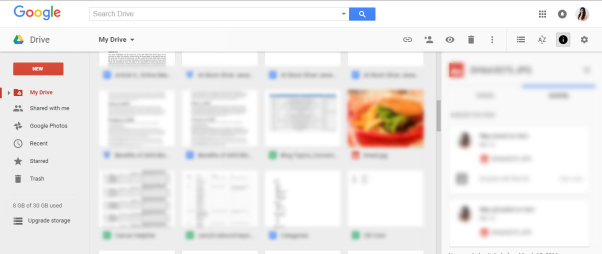“The broader one’s understanding of the human experience, the better design we will have.”- Steve Jobs
Website design plays a very crucial role in the success of any website. It is the golden ticked to success for all the web based enterprises. Needless to say website design is highly related with the user experience. However, the important thing to consider is that 88% of online consumers are less likely to return to a site after a bad experience (Source: Econsultancy). Thus, it is very important to ensure that the website is smartly/creatively designed, aesthetically beautiful and functionally friction-less.
Going for a great website design is as important for a startup as breathing is for humans. Whether it is a lead generating website or an eCommerce store, what appeals to the eye, converts. For startups, it is very important to build a strong web presence. The website should not only be able to convey the business properly, but also should be able to tell the story of the startup in an interesting way. There are five website design tips for startups which they must incorporate in their website design for getting higher conversions. They are as follows:
- Use conversion focused design
- Make your sidebar worth looking at
- Use the negative space effectively
- Give it an aesthetic look
- Use psychological triggers
Let us understand these website design tips for startups in detail:
Use conversion centered design
All of us know very well about user centered design but what actually works for a business is a conversion centered design. User centered design mainly focuses on the user experience whereas conversion centered design focuses on the user goals as well as business goals. Your design might be able to provide a good experience to your user but is it worth it if it is not adding to your conversions? No. Design should be such that it meets goals of both the parties involved. That’s where conversion centered design comes into play. It is designed keeping in mind the business requirements of the company and the online behaviour pattern of the target user group. It also covers effective call to action, site speed and overall look and feel of the website.
Also, ensure that the website design meets the following:
- It conveys your value proposition accurately
- It is responsive (for all the devices)
- It is mobile optimized
Make your sidebar worth looking at
Are you putting too many widgets or ads at your sidebar? If yes, remove them and don’t give them a cluttered look at all. Neat and clean sidebars add more value to the sidebar, however, not all of them have the same impact. For example, if your blog is related to entrepreneurship, showing related posts on the top in the sidebar would be more beneficial than showing latest posts of another category. Similarly, not so good looking ads are a big no-no. They may spoil the beauty of the blog. Secondly, if you are putting the same links again in the sidebar which are already there in the header menu and footer, then maybe you are overdoing it. You need to reconsider it before putting it in the sidebar. For example, the sidebar of google drive is simple yet conversion focused. None of its links get repeated anywhere. That’s what is required, no redundancy!

Thus, one must design the sidebar in such a way, that:
- It connects the users to relevant content
- The designed does not look like cluttered
- There is no repetition of the links
Use the negative space effectively
Blank is not always bad and a good UX design with balanced usage of negative spaces or empty spaces is a testimony of that. Properly implemented negative spaces may add appeal to the website and contribute to a seamless user experience. Negative spaces or blank spaces let the user focus on a particular thing. Having said that, striking out balance is very important. Right use of design elements at the right place plays a very crucial role in the process of good website design. The “less is more” is better than the “more is more” when it comes to website design.
Thus, use the blank places in your website to:
- Emphasize on important things
- Give the website a neat and clean feel
- Avoid user confusion due to presence of too many things
Give it an aesthetic look
Your website is the first representative of your business who meets your consumers. Make it appealing to eye so that the user gets hooked to the website. Ensure that the following design elements are incorporated:
- 360 degree view
Give your users a 360 degree (complete) picture of the services and products (in case of an ecommerce store). If you are selling products online, then ensure that photos from all the angles are clicked to give a better view to the user. If you are selling extensions for any CMS then ensure that all the required screenshots are given and elaborated properly. Providing a 360 degree view boosts confidence in users and increases the conversion rate of your website.
- High definition images
Always use high definition images on the website. However, ensure that they are compresses properly so that the loading time of the website does not go high.
- Encapsulation
Encapsulation is the technique which is used for diverting user’s attention to a specific point. It is usually done using images, graphics or just simple frames around the element which you want to highlight.
Use psychological triggers
Humans are emotional beings and using psychological triggers may help you a bit in your conversion process. Good designs come from heart, not from the brain. However, marketing strategies when incorporated in the form of design, trigger the emotions which you want for your conversions. Psychological triggers like urgency and scarcity, fear of loss, fear of gain etc. must be utilized properly to give you better results.
Conclusion
Website design plays a very crucial role in the growth of any startup. If you have already designed your website, think whether the aforementioned elements have been incorporated in it or not. If not, find a solution to incorporate these. If you are planning to get your website designed, look for an agency which excels in conversion centered design. Going for conversion focused design and development will make you win half the battle as your website will start working for you.
If you are looking for how to optimize the profits, read here what is the importance of conversion rate optimization?


